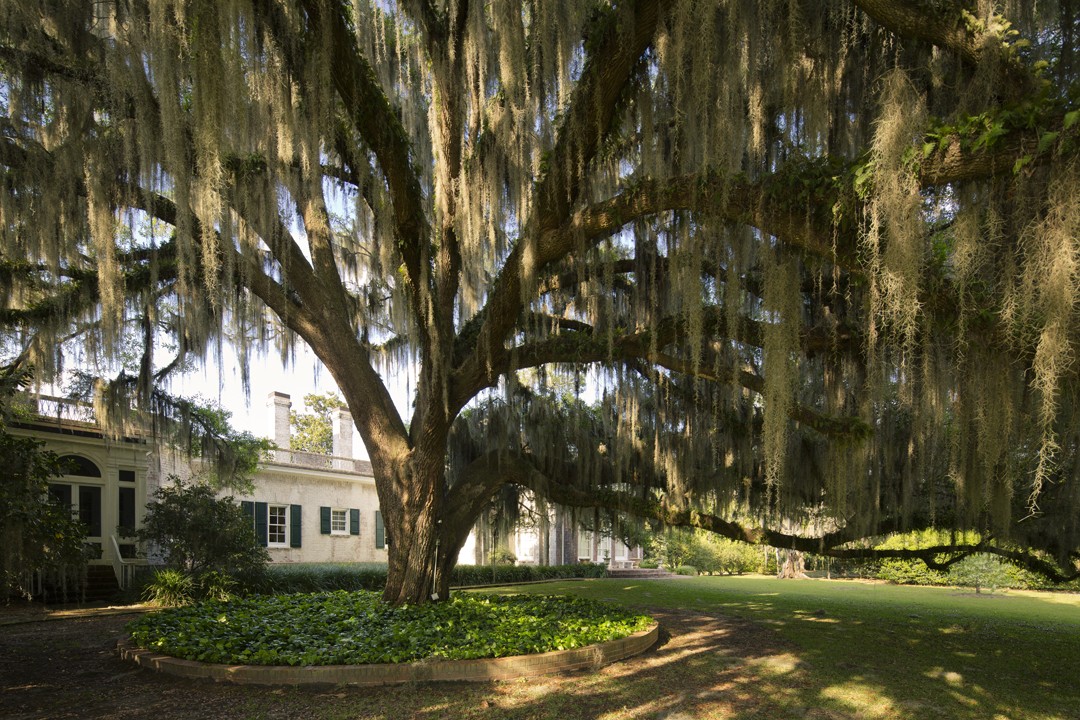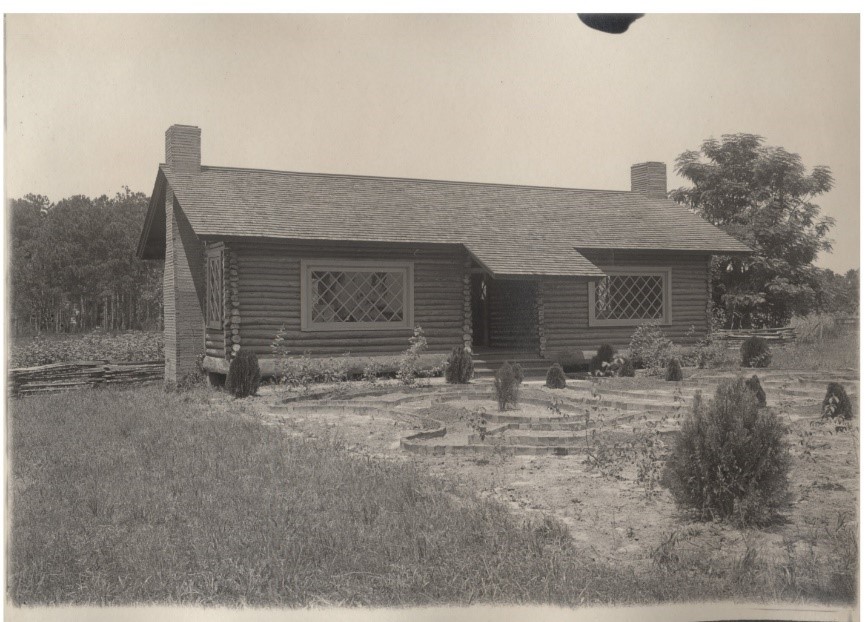Stop #9
Log Cabin &
Overflow Cottage
The oldest building on the property today, the Log Cabin, was built in 1901 and served as a schoolhouse and playroom. The Ireland children, Elisabeth “Pansy” and Livingston “Liv,” were tutored here during the winter months while the family was in residence.
Architect Abram Garfield designed the white frame house known as the Overflow Cottage or “O.C.” in circa 1917. The Hanna family used this cottage as additional housing for visiting guests. In 2007, the “O.C.” was renovated to accommodate overnight lodging reservations.
*Plantings included in Miss Ethelwyn Harrison’s master plan
 Native plant
Native plant
Needle Palm
Rhapidophyllum hystrix
Also known as porcupine palm, this dwarf fan palm grows 4 to 8 feet tall and is shrubby and dense. The nearly trunkless needle palm produces long, rounded fan leaves growing from a single dense base forming numerous sharp needle-like spines between the leaves. These long sharp spines protect the plant from browsing wildlife.
Sago Palm
Cycas revoluta
Commonly known as sago palm, this evergreen cycad is botanically closer to conifers than to palms. This symmetrical plant produces a crown of arching, shiny, palm-like dark green leaves with spiny tips. Feather-like rosettes grow from the trunk.
Saucer Magnolia
Magnolia x soulangiana ‘Alexandrina’
This deciduous tree produces gorgeous pink blossoms before the leaves appear in late January to mid February. Also known as tulip magnolia, the saucer magnolia petals grow fairly upright, giving the flowers a distinctively tulip-like appearance. As the flowers age, the petals tend to open more and lay down, creating a more saucer-shaped flower.
Log Cabin in 1903
Log Cabin in 1936
Tea Olive
Osmanthus fragrans
This large evergreen shrub or small tree in the olive family with finely-toothed glossy leathery leaves can grow 10 to 20 feet. Blooming several times throughout the year, tea olives produce small clusters of white flowers with a strong fragrant apricot-like scent that attracts pollinators.
Wisteria*
Wisteria sinensis
This deciduous climbing vine from the pea family has interwoven stems and can be trained as a standing tree or shrub. In early spring before the leaves appear, purple blooms with a grape-like fragrance cascade down from the stems of last year’s growth. Wisteria is reminiscent of old southern landscaping and can be found in many locations throughout the property.

